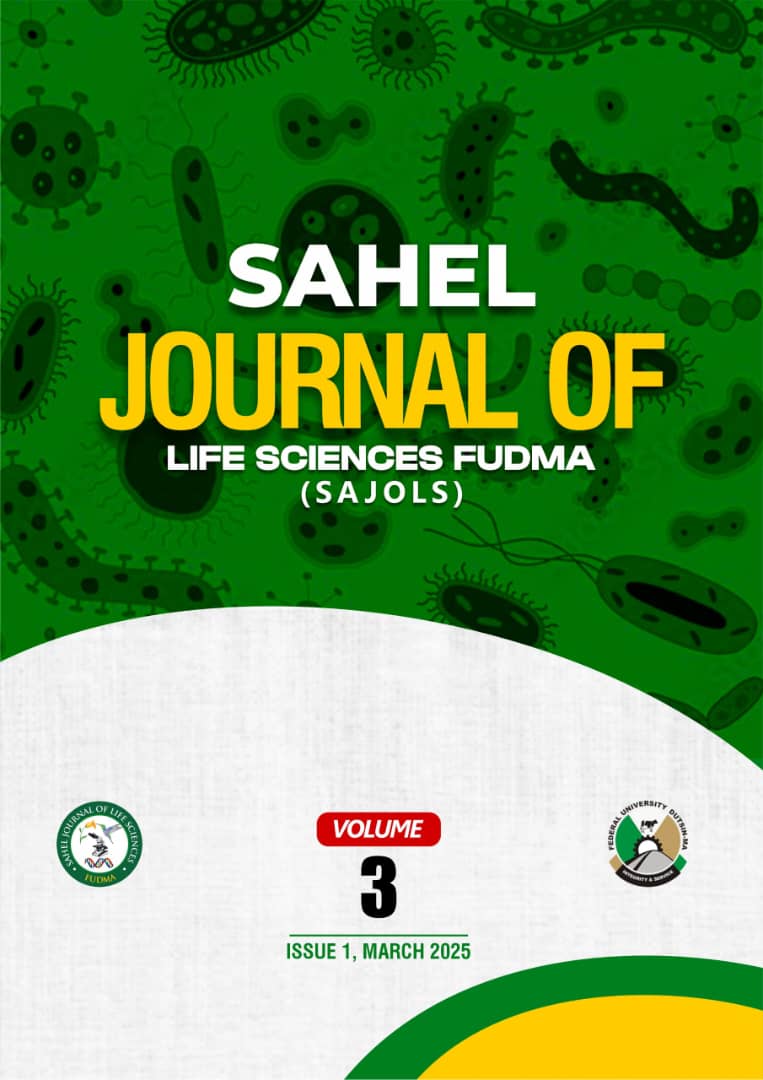Effects of Drying Methods on Nutrient Contents of Laptadenia hastata (PERS.) Decne Leaves
DOI:
https://doi.org/10.33003/sajols-2025-0301-49Keywords:
Dehydration, Drying methods, Laptadenia hastata, Nutrient, Preservation techniquesAbstract
Laptadenia hastata (Pers.) Decne, a leafy vegetable widely consumed in Africa for its nutritional and medicinal properties, undergoes drying as a preservation method to enhance its shelf life and utility. This study investigated the effects of three drying methods, sun drying, shade drying, and oven drying, on the proximate and mineral composition of L. hastata leaves. The leaves were subjected to a proximate analysis to determine their moisture, protein, carbohydrate, fibre, ash, and lipid content, as well as a mineral analysis for sodium, potassium, calcium, and magnesium. The results revealed significant variations in nutrient retention across the drying methods. Oven drying emerged as the most efficient method, yielding the lowest moisture content (6.93%) while preserving the highest levels of carbohydrates (95.38%), fibre (17.71%), and lipids (1.31%). Sun drying, although cost-effective, resulted in moderate nutrient retention, with notable sodium (1.29 mg/kg) and ash (11.73%) content but lower fibre and lipid values. Shade drying, while retaining more heat-sensitive minerals such as calcium and magnesium, showed the lowest efficiency in reducing moisture and preserving carbohydrates and fibre. The findings highlight the differences between drying methods, emphasizing the superiority of oven drying for nutrient preservation in controlled settings, while sun and shade drying remain viable for resource-limited contexts. This study provides critical insights into optimizing drying methods to maximize the nutritional value of L. hastata, thereby enhancing its role in food security and public health.


